|
Displaying items by tag: 17th century

The Metropolitan Museum of Art in New York City will present Diego Velázquez’s (1599-1660) Portrait of Duke Francesco l d’Este, one of the most important portraits by the Spanish painter, through July 16, 2013. The painting is on loan from Italy’s prestigious Galleria Estense in Modena and has never traveled to the United States before. The exhibition, Velázquez’s Portrait of Duke Francesco l d’Este: A Masterpiece from the Galleria Estense, Modena, will coincide with the opening of the Met’s renovated New European Painting Gallery, 1250-1800.
Velázquez, the leading artist in the court of King Philip IV, painted d’Este, the Duke of Modena and Reggio Emilia, while he was visiting Madrid in 1638 to meet with King Philip and ask for his support. The commanding portrait of the 17th century ruler is a key work of baroque portraiture as well as a prime example of Velázquez’s artistic contribution to Spanish diplomacy.
The Galleria Estense acquired the portrait of d’Este in 1843 where it joined works by Tintoretto (1518-1594), El Greco (1541-1614), and Paolo Veronese (1528-1588). The museum also boasts a strong collection of decorative works, musical instruments, archaeological material, and sculptures. The Galleria was damaged in 2012 when a series of earthquakes struck the region of Emilia-Romagna. Restoration of the building has begun but will require years of repair. In the meantime, while many of the museum’s works are being held at the Ducal Palace in Sassuolo, Velázquez’s portrait will make a highly anticipated appearance to New York.
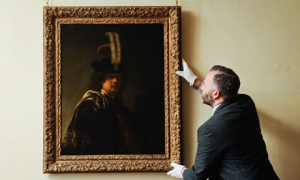
In 2010, the UK’s National Trust was given five paintings from the estate of the late Edna, Lady Samuel of Wych Cross, the widow of Harold, Lord Samuel of Wych Cross, a property developer, philanthropist, and prominent art collector. Among the bequest was a portrait of an ornately dressed man believed to be a relatively unremarkable 17th century painting. Although the work bears a signature and date reading “Rembrandt 1635,” experts believed it to be a later copy or the work of one of the Dutch master’s pupils.
The painting, which spent nearly two years in storage, has just been identified as an authentic Rembrandt (1606-1669) self-portrait worth over $30 million. The painting hadn’t been examined since 1968 and recent X-ray analysis along with newly found circumstantial evidence from the Rembrandt Research Project indicates that the work is in fact genuine.
The self-portrait is the only Rembrandt in the National Trust’s collection of 13,500 paintings and will remain on view at Buckland Abbey through the end of tourist season. Once it is taken off view the painting will be undergo a thorough cleaning and further technical analysis. Experts will perform dendrochronology to date the beech panel the work is painted on, the paint will be analyzed, and the painting will be x-rayed again to check for under-drawings.
David Taylor, the National Trust’s curator of paintings and sculpture, expects to have a final confirmation on the painting by early next year.

This summer the Royal Collection will present Leonardo da Vinci: The Mechanics of a Man, an exhibition that will place a selection of Leonardo da Vinci’s (1452-1519) anatomical drawings alongside modern 3D films as well as CT and MRI scans of the human body. Da Vinci worked tirelessly to gain an understanding of the inner workings of the human body, often dissecting corpses and recording his findings in comprehensive drawings. The Mechanics of a Man will illustrate how deeply the Renaissance master came to understand human anatomy through his exhaustive studies.
The drawings, which will go on view at the Queen’s Gallery Holyroodhouse in Edinburgh, Scotland, are part of the Royal Collection and many have never been exhibited in Britain. The drawings were brought to England during the 17th century, bound into an album, and most likely purchased by King Charles II. The works, which include da Vinci’s Anatomical Manuscript A, 18 sheets crammed with 240 drawings and nearly 13,000 words of notes, have been in the Royal Collection since at least 1690.
Although da Vinci’s scientific findings were never published, he came extraordinarily close to discovering the role of the beating heart in circulating blood throughout the body. He also recorded accurately for the first time cirrhosis of the liver and narrowing of the arteries after dissecting a 100-year-old man in 1508. In 1510-1511, while working as a professor of anatomy, he created many multi-layered drawings portraying nearly every bone in the body, accurately depicting the spine for the first time as well as many of the major muscle groups.
The Mechanics of Man will present da Vinci’s famous drawing of a baby in a womb alongside a 3D ultrasound scan of a fetus. The exhibition will also place his drawings of a hand, which include the layers of bones, muscles, and tendons, beside a film of a dissected hand in high definition 3D. The exhibition will vividly illustrate just how groundbreaking da Vinci’s work was.
Leonardo da Vinci: The Mechanics of a Man will be on view from August 2, 2013 through November 10, 2013.
Serbian police recovered Rembrandt’s (1606-1669) Portrait of a Father on Tuesday, March 12, 2013, seven years a after it was stolen from the Novi Sad City Museum located in the northern city of Novi Sad. Police arrested four people in connection to the 2006 heist that involved three other paintings including a work by the Flemish Baroque painter Peter Paul Rubens (1577-1640), a 17th century piece by the Italian Baroque painter Francesco Mola (1612-1666), and another painting from the 16th century by an unknown German-Dutch artist.
Rembrandt, one of the greatest painters and printmakers in European art history, painted Portrait of Father in 1630 and it is estimated to be worth around $3.7 million. The painting was stolen 10 years prior to the 2006 robbery, but it was eventually recovered in Spain.
None of the other works involved in the Serbian heist have been found.

A painting by the 17th century Flemish Baroque artist, Anthony van Dyck (1599-1641), was discovered in a storage room belonging to the Bowes Museum in England. Portrait of Olive Boteler Porter was purchased by the Bowes Museum’s founders, John and Josephine Bowes, in 1866 and has been in the institution’s collection since it opened to the public in 1892.
The painting’s poor condition led museum officials to record it in files as ‘School of van Dyck’ rather than an original van Dyck masterpiece. Relegated to a storage room, the work was discovered when it was photographed earlier this year for a project committed to putting all of the UK’s publically owned oil paintings on a single website. Art historian and dealer, Dr. Bendor Grosvenor, who is working on the digital venture, recognized the wrongly identified painting as an original Van Dyck.
The oil on canvas painting features the expert drapery and coloring often present in van Dyck’s female portraits from the 1630s. Originally thought to be a painting of Queen Henrietta Maria, additional research identified the sitter as Olive Boteler Porter, the queen’s lady-in-waiting and the wife of van Dyck’s friend and patron Endymion Porter.
After being examined by various van Dyck scholars, the painting has been authenticated. The recently restored masterpiece is now on view at the Bowes Museum.
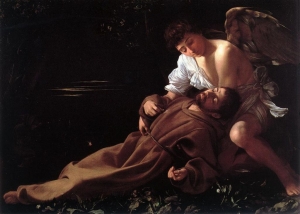
Burst of Light: Caravaggio and His Legacy, which is currently on view at the Wadsworth Atheneum Museum of Art in Hartford, CT, is the first exhibition in over 25 years to focus on the legacy of the Italian master, Caravaggio (1571-1610). The show explores Caravaggio’s profound influence on 17th century European art and includes 30 works by followers of the artist known as “Caravaggisti.”
Burst of Life will present five original paintings by Caravaggio including the Wadsworth’s own Ecstasy of St. Francis, which was acquired by the museum in 1944, making it the first Caravaggio work to join an American museum’s collection. The other works on view are Martha and Mary Magdalen from the Detroit Institute of Arts, Salome Receives the Head of St. John the Baptist from the National Gallery in London, The Denial of St. Peter from the Metropolitan Museum of Art in New York, and Saint John the Baptist in the Wilderness from the Nelson-Atkins Museum of Art in Kansas City, MO.
Burst of Light explores Caravaggio’s renowned use of light, painstaking attention to detail, and emotionally captivating compositions. The exhibition will be on view through June 16, 2013.
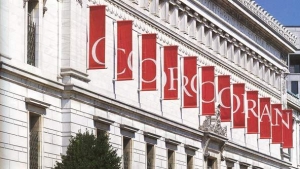
On June 5, 2013 the Corcoran Gallery of Art in Washington, D.C. will auction 25 rugs from its William A. Clark Collection at Sotheby’s New York. The rugs, which are from the 16th and 17th centuries, are estimated to bring as much as $9.6 million.
The rugs were part of a bequest from William Clark (1839-1925), a Montana-based billionaire entrepreneur-turned-senator, to the Corcoran in 1925. The gift was comprised of 200 paintings and drawings and a number of other works, including the rugs.
The Corcoran will use the proceeds from the sale to support future acquisitions that will better fit the institution’s focus on American and contemporary art. While the Corcoran has endured recent financial troubles, the money will not be used for operating expenses in keeping with its deaccession policy.
Highlights from the Corcoran sale include the Clark Sickle-Leaf Carpet, which is expected to garner between $5 million and $7 million. An unknown Persian artist created the rug during the first half of the 17th century possibly for the shah. The rarely exhibited Sickle-Leaf is one of the most iconic and important carpets to appear at auction. Another rug known as the Lafoes Carpet, which measures 44 feet long, is expected to bring between $800,000 and $1.2 million.
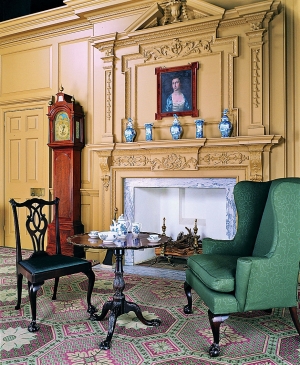
A Grand Tour: Trade Winds of Influence
16th Annual Charleston Art & Antiques Forum
March 13–17, 2013
Old Courtroom, 23 Chalmers Street, Charleston, S.C.
For information visit www.CharlestonAntiquesForum.org or call 800.926.2520
The forum will bring together an impressive group of speakers from the US and Europe who will demonstrate the influence of the Grand Tours of the seventeenth through nineteenth centuries on the architecture, furniture, silver, art, and gardens of Americans and Europeans alike. Dame Rosalind Savill, Director Emeritus of the Wallace Collection, London, England, will deliver the keynote address, focusing on her experience with French decorative arts. The mission of the Charleston Art & Antiques Forum is to present the best fine and decorative arts scholarship, and to benefit arts education and preservation. Sponsors of the 2013 Forum are Charlton Hall Auctions, PDI, and the Florence Museum.
10th Annual Charleston Antiques Show
March 22–24, 2013; preview March 21
Memminger Auditorium, 56 Beaufain Street, Charleston, S.C.
66th Annual Spring Festival of Houses and Gardens
March 21–April 20, 2013
For information visit www.historiccharleston.org or call 843.723.1623
Inspired by the rich historical, architectural, and cultural heritage of Charleston, the 10th annual Charleston Antiques Show is a premier destination for collectors and enthusiasts who enjoy seeing and learning about incorporating antiques into modern-day décor. Attendees will find English, European, and American period furnishings, decorative arts, and fine art, architectural elements, garden furniture, vintage jewelry, and silver. In addition to attending the show, visitors can sign up for special events such as a luncheon lecture with the award-winning classical architect Gil Schafer, behind-the-scenes tours with experts, and study tours. While in Charleston, enjoy walking tours through the city’s historic district showcasing Charleston’s distinctive architecture, history, and gardens during the 66th Annual Festival of Houses and Gardens and experience the intimate charm and elegance found within private gardens and historic homes.
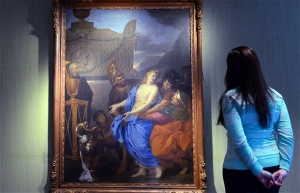
Paris’ legendary Ritz hotel, which is currently undergoing a major $267.5 million renovation, has been unknowingly sheltering a 17th century masterpiece. The work, which is believed to be by the French painter and court artist of Louis XIV, Charles Le Brun (1619-1690), was first spotted by Olivier Lefeuvre, a specialist in the period at Christie’s France. Upon seeing the painting in July, a month before the Ritz closed its doors for two years worth of renovations, Lefeuvre knew that the work had to be a Le Brun. Initials reading “CLBF,” which stands for Charles Le Brun Fecit (Le Brun did this) and a date, “1647,” were found on the work, supporting Lefeuvre’s hunch.
How the painting ended up in the Ritz remains a mystery, as the hotel archives lack any reference to the work. While Christie’s has been unable to track down any record of the painting, officials have no doubt that the work is an authentic Le Brun. The painting, which depicts the killing of Trojan princess Polyxena after she was linked to the death of Achilles, was renamed The Sacrifice of Polyxena by Christie’s.
The Le Brun painting will be auctioned by Christie’s in Paris in April 2013 and could raise as much as $665,000 for the foundation established by owner Mohamed Al Fayed in memory of his son Dodi, the late boyfriend of Princess Diana. Dodi and Diana dined at the Ritz before their fatal car accident in 1997.
The painting will go on display at Christie’s New York location next week.
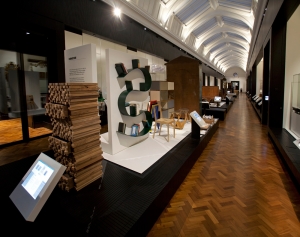
The Dr. Susan Weber Gallery is now open at the Victoria & Albert Museum in London. Designed by the Scottish firm NORD architecture, the gallery houses the museum’s expansive furniture collection that was once relegated to occasional displays and temporary exhibitions.
The museum’s collection spans more than five centuries and features over 200 pieces of British and European furniture as well as guest pieces from America and Asia. The V & A’s holdings are varied and include classic works by historic names like Thomas Chippendale and George Bullock as well as modern and contemporary pieces. Special attention is paid to the process of furniture making and the gallery’s display emphasizes the materials and techniques responsible for each masterpiece. The vast collection allows patrons to see how such things as joinery, turning, carving, veneering, marquetry, and upholstery have changed over the years.
Highlights on view include a 17th-century scagliola table, Patrick Jouin’s “One Shot” folding stool, which is the earliest example of contemporary digitial manufacturing, a painted Tyrolean cupboard from 1776, and a 15th-century desk-cupboard made from oak that was sources from 1,500 miles away. The new gallery also features touch-screen interfaces, short films that explain fundamental techniques, and audio commentary by furniture-makers and historians.
The gallery was funded by and named after Dr. Susan Weber, a graduate of London’s Royal College of Art. Since 1991, Weber has served as the founder and director of Bard College’s Graduate Center for studies in the decorative arts, design, and culture in upstate New York.
|
|
|
|
|